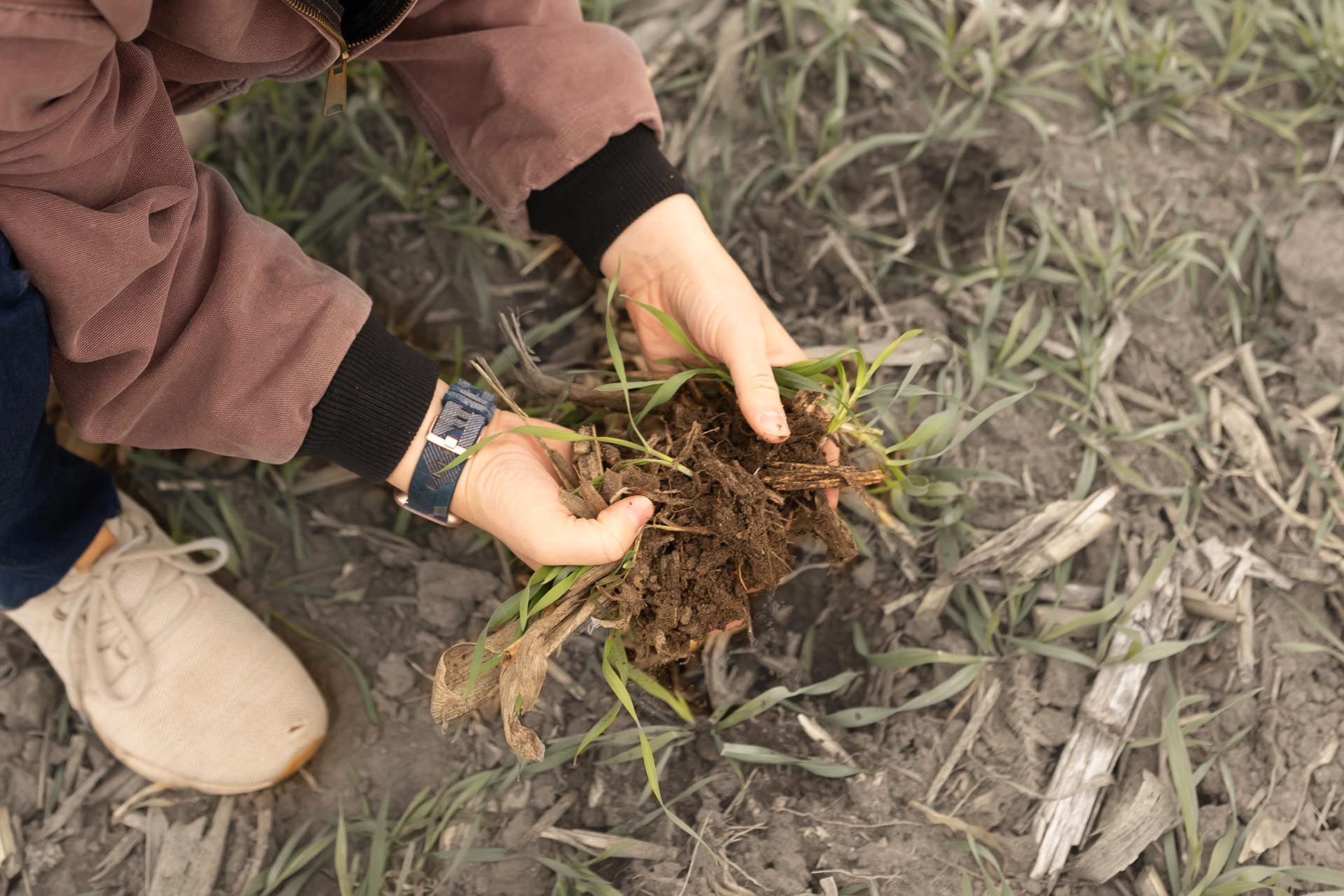
(Photo: Iowa Soybean Association / Joclyn Bushman)
Farming for the future
March 11, 2024 | Kriss Nelson
Editor’s note: This story first appeared on the Iowa Food & Family Project (IFFP) blog. Learn more at iowafoodandfamily.com.
“ Farmers are interested in improving their farms and leaving them better for the next generation,” says Chuck White, a Clay County farmer and past Iowa Soybean Association (ISA) director. “This is Iowa’s most important natural resource, and we want to protect and improve it.”
Megan Holz, general manager of Iowa Cover Crop, a full-service cover crop business in Jefferson, is not only in the business of selling cover crops but understands the importance of this conservation practice on her family’s farmland.
“As a mother, I see using cover crops as a long-term investment to preserve my land for my children,” says Holz, an ISA farmer member. “I might not see all the benefits in my lifetime, but I know it’s the right thing to do.”
More than just a cover
Cover crops offer various benefits to Iowa farmland, slowing down soil erosion, weed control and improving soil health.
“It’s very cool that, as farmers, we are in a profession where we can sequester carbon and make food and fuel more sustainable through our actions,” says Holz.
White began raising cover crops in 2013 as an alternative way to improve his farm’s soil health.
“I started using cover crops to help keep nutrients sequestered in the field,” Chuck says. “But we found out there are other soil health benefits that go along with that. There’s better soil structure, moisture retention and weed suppression. Cover crops have been a good way to improve our farms.”
Chuck’s son, Patrick, has seen firsthand those advantages since he started farming.
“I have seen how our fields transformed over the last decade,” says Patrick. “We have more earthworms and better soil structure. Looking to the future, we want to continue to have higher productive soils, and this is where cover crops are helping to improve soil health.”
How can giving the soil a blanket of cover crops in the fall help with weeds in the next growing season?
“When cover crops overwinter and come back up in the spring, they suppress weeds from growing,” Megan says. She adds that the biomass left from the cover crops terminated in the spring provides another blanket for the soil.
Cover crops prevent soil erosion by acting like a shield against wind and rain and improving overall soil health.
“Cover crops help to keep our essential soil in place,” explains Holz. “They help enhance soil nutrients, making it more fertile by adding to the organic matter and improving soil health in the long-term.”
“Soil health can bridge the gap between rural areas and cities,” says Patrick. “Cover crops help to take nutrients out of water systems, sequester carbons and more.”
A variety of options
There are several cover crop species farmers use to help blanket their soil.
Iowa Cover Crop's top selling product is cereal rye, Holz says.
“Cereal rye is very easy to establish and provides a good cover,” she points out. “It is something you put out there and know it will grow. Not only is it the biggest seller in our company, but it is what most Iowa farmers use.”
Other popular cover crop species include oats, turnips, clover, triticale and hairy vetch.
Some cover crops can be used as livestock feed; others, like turnips, can help break up soil compaction.
Chuck and Patrick have been using a blend of cover crops on their farm. Besides the popular cereal rye, they have added radishes, oats and hairy vetch.
The oats, Chuck notes, will winterkill, so that helps to relieve any competition of growth in the spring with the newly planted corn.
He planted hairy vetch with the hopes that the plants will fix nitrogen, allowing them to reduce the use of synthetic nitrogen fertilizers.
It can be trial and error for Iowa farmers to find the right mix of cover crops for their farm.
“We have a long way to go,” admits Patrick. “We don’t have it all figured out, but we are making headway.”
As they work to find the right mix, the Whites realize the possibilities are endless.
“We will put forth the effort to move forward with our cover crops to improve soil health,” says Chuck. “We are really excited about where we are headed.”
Back